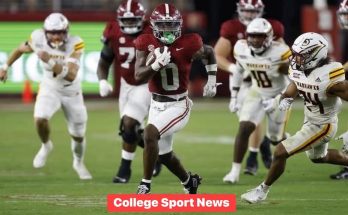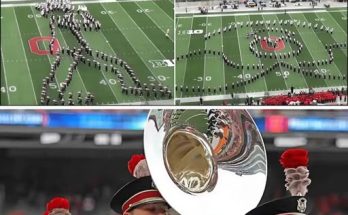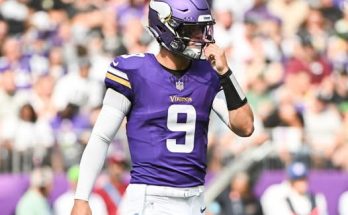When it comes to Kentucky basketball, the Bluegrass State is more than just a geographic marker—it’s a cathedral of college hoops history. The University of Kentucky’s program is one of the most storied in NCAA history, boasting a rich tradition of championships, All-Americans, and NBA-bound stars. Over the decades, the Wildcats have been blessed with transcendent talent, but few have captured hearts and altered the trajectory of the program quite like Jamal Mashburn and John Wall. Both men are legendary in their own right, but the question remains: who had the greatest impact on Kentucky basketball?
To even ask this question is to dive deep into two different eras of Kentucky basketball—the early 1990s, when Rick Pitino resurrected a program plagued by scandal and NCAA sanctions, and the late 2000s, when John Calipari arrived with swagger and ushered in the era of one-and-dones and NBA pipelines. Mashburn and Wall were not just elite players. They were catalysts. They were turning points. They were cultural landmarks in the evolution of a blueblood powerhouse.
Jamal Mashburn came to Kentucky at a time when the program needed more than just talent. It needed redemption. The Wildcats were still reeling from the Eddie Sutton scandal that led to significant NCAA penalties, including postseason bans and scholarship reductions. Enter Mashburn, a versatile, confident, and skilled forward from New York City. From 1990 to 1993, Mashburn didn’t just put up points—he brought hope. His ability to stretch the floor, his smooth jumper, and his unflappable demeanor made him the face of Kentucky’s rebirth.
In his three seasons in Lexington, Mashburn averaged 18.8 points and 7.2 rebounds per game. His junior season was particularly special. In 1992–93, he led Kentucky to a 30-4 record and an unforgettable run to the Final Four. Along the way, Mashburn earned consensus first-team All-American honors and was a finalist for the Naismith and Wooden Awards. Perhaps more than any stat or accolade, his true contribution was intangible. He gave the program credibility again. He restored its competitive edge. Under his leadership, Kentucky basketball became fun, fast-paced, and fearless once more.
The 1992 Elite Eight game against Duke—yes, that game—where Christian Laettner hit the buzzer-beater, remains one of the most iconic in college basketball history. And though Kentucky lost, Mashburn’s performance in that game and throughout that season was nothing short of heroic. He had turned the Wildcats from NCAA pariahs into national contenders. After the season, Mashburn entered the NBA Draft and was selected fourth overall by the Dallas Mavericks. His departure marked the end of an era, but the foundation he helped lay led to Kentucky’s national title in 1996 and several more Final Four appearances under Pitino and Tubby Smith.
Fast forward more than a decade, and Kentucky found itself in a different kind of funk. The Billy Gillispie era had been short-lived and disastrous. The program lacked identity, swagger, and most importantly, wins. In 2009, John Calipari was hired to change all that. And change it he did—almost overnight—thanks in large part to his first great recruit at Kentucky: John Wall.
If Mashburn was the symbol of Kentucky’s rebirth, then Wall was the emblem of its modern reinvention. A high-flying, high-energy point guard from Raleigh, North Carolina, Wall was the No. 1 high school player in the country and the centerpiece of Calipari’s first recruiting class at UK. His arrival signaled the start of something new: Kentucky as a one-and-done destination and NBA talent factory.
Wall’s impact was immediate and electrifying. In his lone season (2009–10), he averaged 16.6 points, 6.5 assists, and 4.3 rebounds per game. But numbers only tell part of the story. Wall brought an energy and visibility to Kentucky basketball that hadn’t been felt in years. His clutch performances, blazing speed, and on-court charisma turned every Kentucky game into must-see TV. He hit a game-winning shot in his collegiate debut against Miami (Ohio) and never looked back. His swagger—punctuated by the now-famous “John Wall Dance”—brought Kentucky back into the national consciousness in a cultural way that transcended basketball.
Kentucky went 35-3 that season, earning a No. 1 seed in the NCAA Tournament. Though the Wildcats fell short in the Elite Eight against West Virginia, the season was an unmitigated success. Wall was named a consensus first-team All-American, SEC Player of the Year, and eventually, the No. 1 overall pick in the 2010 NBA Draft. Kentucky basketball was cool again. And in the years that followed, Calipari would use Wall’s success as a recruiting blueprint, bringing in future No. 1 picks like Anthony Davis, Karl-Anthony Towns, and Zion Williamson (who nearly came to UK before choosing Duke). Wall had opened the door. Kentucky had entered a new era.
So, who had the greater impact—Mashburn or Wall?
It depends on how you define “impact.” If we’re talking about emotional and historical significance, Mashburn’s role in resurrecting a wounded program might carry more weight. He took Kentucky from the ashes and made it proud again. He proved that blue and white blood still flowed strong through the program’s veins. Without Mashburn, it’s hard to say if Kentucky ever makes it back to national relevance in the 1990s. He was the cornerstone, the leader, the soul of a team that changed the perception of UK basketball after years in exile.
On the other hand, if we consider cultural and systemic impact—on recruiting, on branding, on national perception—John Wall’s influence may be greater. He helped build the Calipari empire. He made it acceptable, even enviable, for elite high schoolers to spend one electric year in Lexington before leaping to the NBA. He redefined what Kentucky basketball could be in the 21st century: a destination for stars, a launching pad for pros, a cultural juggernaut.
One could argue that Mashburn saved Kentucky basketball, while Wall supercharged it. Mashburn made people believe in Kentucky again; Wall made people want to be Kentucky.
And it’s also worth noting the broader implications of their legacies. Mashburn remains deeply respected in Lexington, not only for his play but for the way he carried himself during a time when the program was under the microscope. His legacy is tied to leadership, sacrifice, and loyalty. He stayed for three years, grew with the program, and was a true student-athlete in the classic sense.
Wall, meanwhile, is the poster child for the one-and-done era. But that’s not a criticism—if anything, it’s a compliment. His season at Kentucky was proof that one year could be enough to leave a lasting legacy. And even now, more than a decade later, recruits still mention Wall when they talk about their dreams of wearing a Kentucky jersey. His highlights are evergreen, and his name remains synonymous with the program’s modern rebirth.
In many ways, it’s a false choice. Both Jamal Mashburn and John Wall were the right players at the right time. They didn’t just fit into Kentucky’s history—they helped define it. Mashburn reminded the world that Kentucky basketball could rise from scandal to glory. Wall reminded it that Kentucky basketball could evolve, thrive, and dominate in a new era.
Ultimately, trying to choose who had the greatest impact might be like trying to pick between your heart and your soul. Mashburn was the heart of the 90s revival. Wall was the soul of the 2010s revolution. They are both legends of the Bluegrass, and their impact is measured not in trophies alone, but in the lasting identity of one of the greatest programs in sports history.
If you cheer in Rupp Arena, you’re cheering in a house that Mashburn helped build and Wall helped renovate into a palace. Both men, in their own iconic ways, made sure the foundation remains unshakable.



